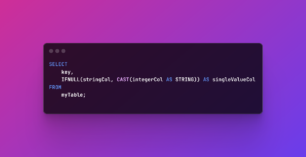В настоящее время во многих рекламных и аналитических системах есть методы передачи данных о произошедших офлайн-конверсиях. Давайте разберемся, как это работает и кому они нужны.
Вот список некоторых систем, поддерживающих офлайн конверсии:
Сначала давайте выясним, чем конверсия отличается от онлайн-конверсии. Что такое коэффициент онлайн-конверсии? Это коэффициент конверсии, регистрируемый в браузере клиента, пока клиент находится на сайте. Например, в результате посещения определенного URL-адреса, нажатия на кнопку или какого-либо события js.
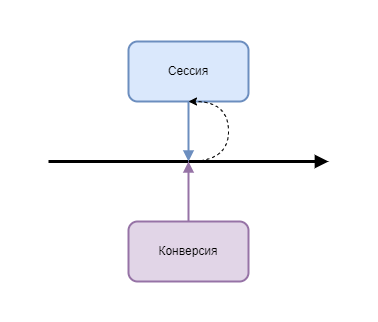
Информация о произошедшем событии передается непосредственно во время сеанса, когда оно произошло.
Однако при офлайн-конверсиях конверсия может происходить в другое время и в другом месте. Например, через несколько часов после активного сеанса, когда менеджер изменяет статус клиента в CRM.

Такие конверсии абсолютно необходимы для некоторых видов бизнеса. Например, если заказ обрабатывается не в режиме реального времени. Или, если заказ оплачивается методом, который не переводит деньги мгновенно.
Однако очень важно правильно использовать этот инструмент.
Например, если мы попытаемся передать данные об офлайн-конверсиях, которые произошли в браузере клиента, как и раньше, мы получим проблему:
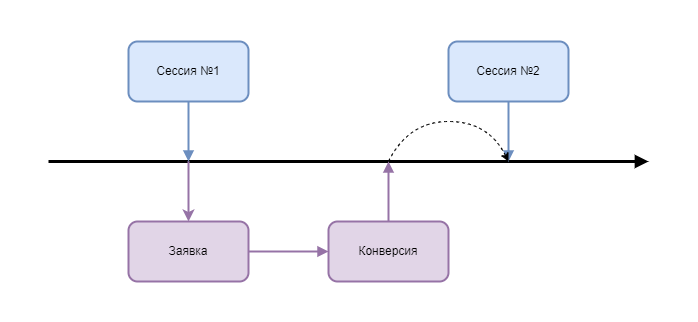
В этом случае конверсии, сработавшей в следующем сеансе клиента, конверсия будет приписана к сеансу, когда она сработала, а не к первому — когда для неё был создан «запрос». Не говоря уже о том, что клиент может не появляться на сайте довольно долгое время.
Итак, наша задача — передать информацию о конверсии с использованием оффлайн способа в тот момент, когда оно произошло. Это позволит отнести его к предыдущему сеансу.
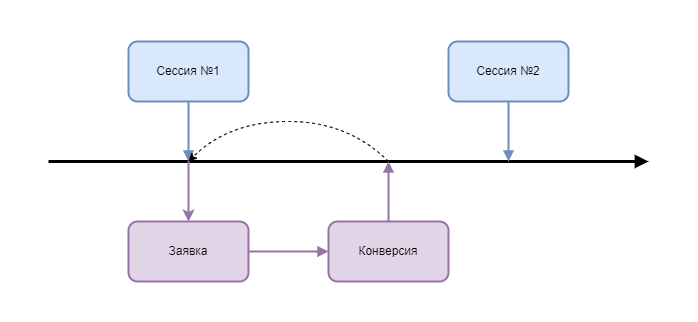
Однако имейте в виду, что по умолчанию как рекламные, так и аналитические системы атрибутируют действия по принципу последнего клика.
Получается, что если клиент завершит еще один сеанс, прежде чем источник получит данные о офлайн конверсии, конверсия будет отнесена на его счет.
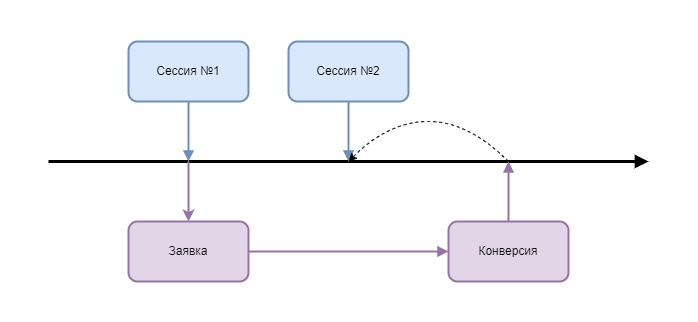
Если вторая сессия была из другой кампании в том же источнике, то источник останется тем же, только выводы об оптимизации будут неверными. Если второй сеанс получен из другого источника, то последующие планы распределения бюджета также будут неверными.
Есть два способа решить эту проблему:
- Передача идентификатора сеанса
- Передача времени конверсии
Иногда можно использовать только один метод, иногда оба сразу.
Передача идентификатора сеанса
Доступно в рекламных системах. Вы видели метки, передаваемые рекламной системой в URL-адресах, не так ли? Это идентификатор рекламного сеанса. Оно содержит информацию о рекламной кампании, группе объявлений, времени клика, местоположении и так далее. Обычно, когда рекламный пиксель обнаруживает сеанс с этой меткой в URL, он также создает файл cookie с копией этого идентификатора. Вам следует попросить программиста записать это в невидимое поле формы при отправке заявки на сайте.
Позже, при отправке офлайн—конверсии, вам нужно будет добавить к ней этот идентификатор.
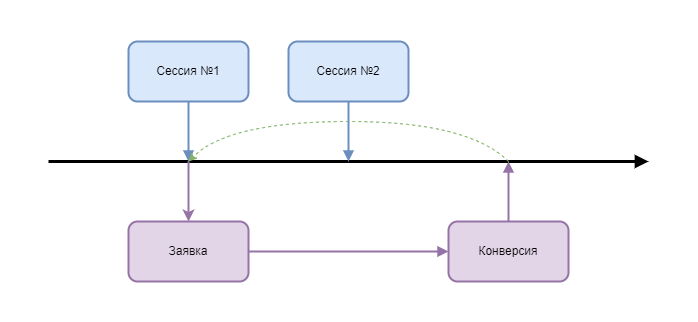
И рекламная система будет знать, к какому сеансу отнести эту конверсию.
Передача времени конверсии
Доступно в рекламных и аналитических системах. Позволяет фиксировать время, когда произошла конверсия, в параметрах конверсии. И тут срабатывает хитроумное волшебство — вы передаете системе неправильное (не то когда она фактически произошла) время конверсии, заставляя ее работать корректно.

Если вы передадите время запроса с конверсией, которая произошла через два дня после запроса, это будет выглядеть так, как будто конверсия произошла мгновенно, просто данные о ней были переданы двумя днями позже.
Предпочтительным методом является синхронная передача времени конверсии рекламным и аналитическим системам, поскольку в результате атрибуция будет строиться одинаковым образом между системами, в то время как атрибуция по идентификатору сеанса поддерживается только одной системой, которая генерирует собственный идентификатор.
